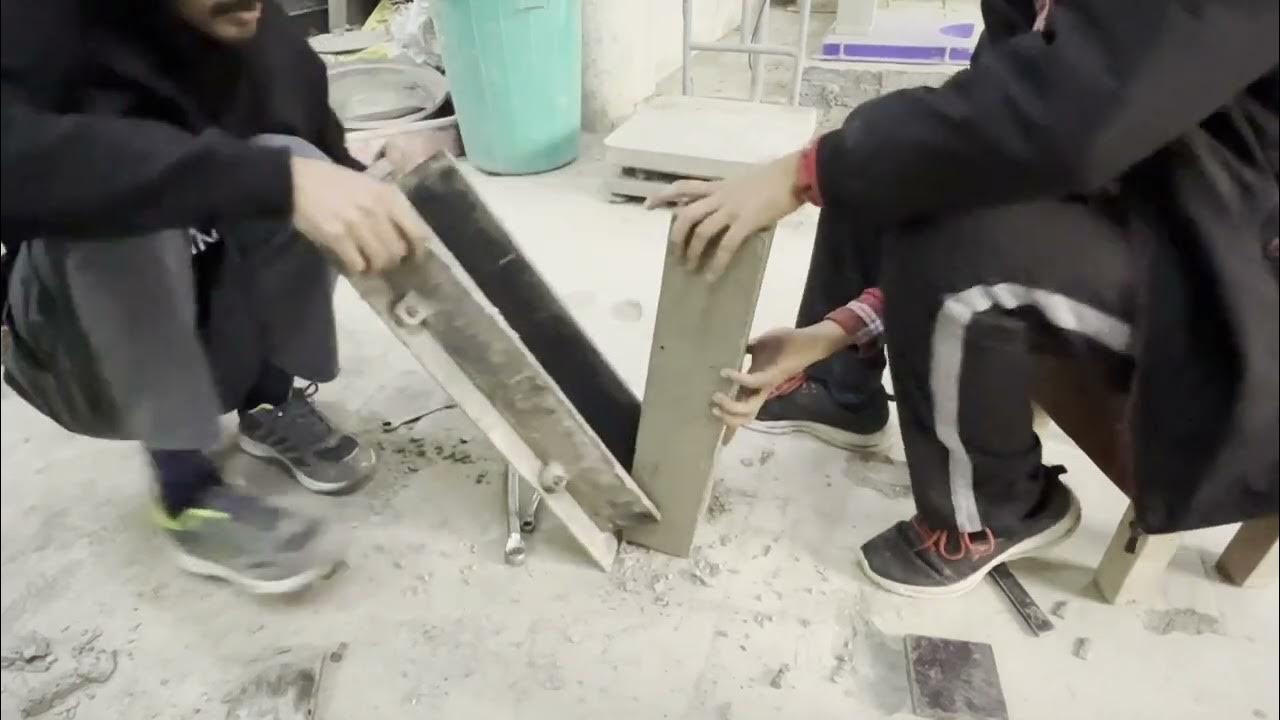Why Pre-Stress Concrete?
Summary
TLDRPre-stressed concrete beams enhance strength by combining high-strength steel and concrete, actively engaging materials to resist tension. Traditionally reinforced beams rely on passive steel reinforcement. Pre-stressing involves tensioning steel before concrete cures, creating compression to offset future loads. Post-tensioning applies tension after curing. Both techniques allow for longer spans and increased load-bearing capacity, though they introduce design and construction complexities.
Takeaways
- 🏗️ Traditionally reinforced concrete beams rely on steel bars to handle tension, while pre-stressed beams actively engage the materials to handle loads.
- 🔗 Concrete is strong in compression but weak in tension, leading to cracks and failure under bending loads without reinforcement.
- 📐 Reinforcing steel bars are placed in the tension zone of traditionally reinforced beams to prevent cracking.
- 🔄 Pre-stressed beams use pre-tensioned cables that contract and induce compression, enhancing the beam's load-bearing capacity.
- ⚖️ The amount of pre-stressing must be calibrated to avoid tensile cracking and to counteract concrete shrinkage over time.
- 💧 Concrete shrinkage, which can occur for up to 18 months, reduces the tension force in the steel, affecting the pre-stressing load.
- 🔩 High strength reinforcing and concrete are used in pre-stressed beams to maximize the benefits of pre-stressing.
- 🔄 Post-tensioned concrete applies the pre-stress after the concrete has cured, offering flexibility in load distribution.
- 📏 Post-tensioned tendons can be sheathed or unsheathed, impacting load transfer, construction, and durability.
- 🏗️ Prestressing offers benefits like stiffer sections, reduced material use, longer spans, and increased load capacity, but at the cost of added complexity.
Q & A
What is the primary difference between traditionally reinforced concrete beams and pre-stressed concrete beams?
-Traditionally reinforced concrete beams passively combine steel and concrete, whereas pre-stressed concrete beams actively engage the materials to induce compression in the tension zone before any external load is applied.
Why is concrete less strong in tension compared to compression?
-Concrete is less strong in tension because it lacks the internal reinforcement needed to resist tensile forces, which can lead to cracking and failure when subjected to bending loads.
How do reinforcing steel bars prevent cracks in traditionally reinforced concrete beams?
-Reinforcing steel bars are placed in the tension zone of traditionally reinforced concrete beams to take up the tensile load once the concrete cracks, thus preventing the cracks from propagating and causing failure.
What is the purpose of pre-tensioning in pre-stressed concrete beams?
-Pre-tensioning in pre-stressed concrete beams is used to induce compression in the tension zone, which allows the beam to carry more load before reaching a state of net tension compared to traditionally reinforced beams.
How does concrete shrinkage affect pre-stressed beams?
-Concrete shrinkage can reduce the tension force in the pre-stressed steel, leading to a decrease in the pre-stressing load. This requires additional pre-stressing to offset the losses from shrinkage.
Why is high strength reinforcing steel used in pre-stressed concrete?
-High strength reinforcing steel is used in pre-stressed concrete to maximize the benefits of pre-stressing by allowing for greater loads to be carried without tensile cracking or rupture of the steel.
What is the difference between pre-tensioned and post-tensioned concrete?
-Pre-tensioned concrete involves tensioning the cables before pouring the concrete, while post-tensioned concrete applies the pre-stress to the tendons after the concrete has cured but before the structure experiences its design loads.
What are the benefits of using post-tensioned concrete?
-Post-tensioned concrete allows for the precise application of pre-stress after the concrete has cured, enabling the achievement of desired bending and deflection criteria tailored to specific structural needs.
How does pre-stressing improve the performance of concrete beams?
-Pre-stressing improves the performance of concrete beams by creating a stiffer section, allowing for the use of less material, longer spans, or the carrying of additional load.
What are the challenges associated with designing and constructing pre-stressed concrete beams?
-Designing and constructing pre-stressed concrete beams can be more complex due to the need for careful calibration of pre-stressing forces, accounting for concrete shrinkage, and the use of high strength materials.
How can the public contribute to the content of future videos on pre-stressed beams?
-The public can contribute to the content of future videos by sharing their thoughts in the comments, suggesting ideas for future video topics, and expressing interest in deeper dives on specific subjects.
Outlines

This section is available to paid users only. Please upgrade to access this part.
Upgrade NowMindmap

This section is available to paid users only. Please upgrade to access this part.
Upgrade NowKeywords

This section is available to paid users only. Please upgrade to access this part.
Upgrade NowHighlights

This section is available to paid users only. Please upgrade to access this part.
Upgrade NowTranscripts

This section is available to paid users only. Please upgrade to access this part.
Upgrade Now5.0 / 5 (0 votes)





